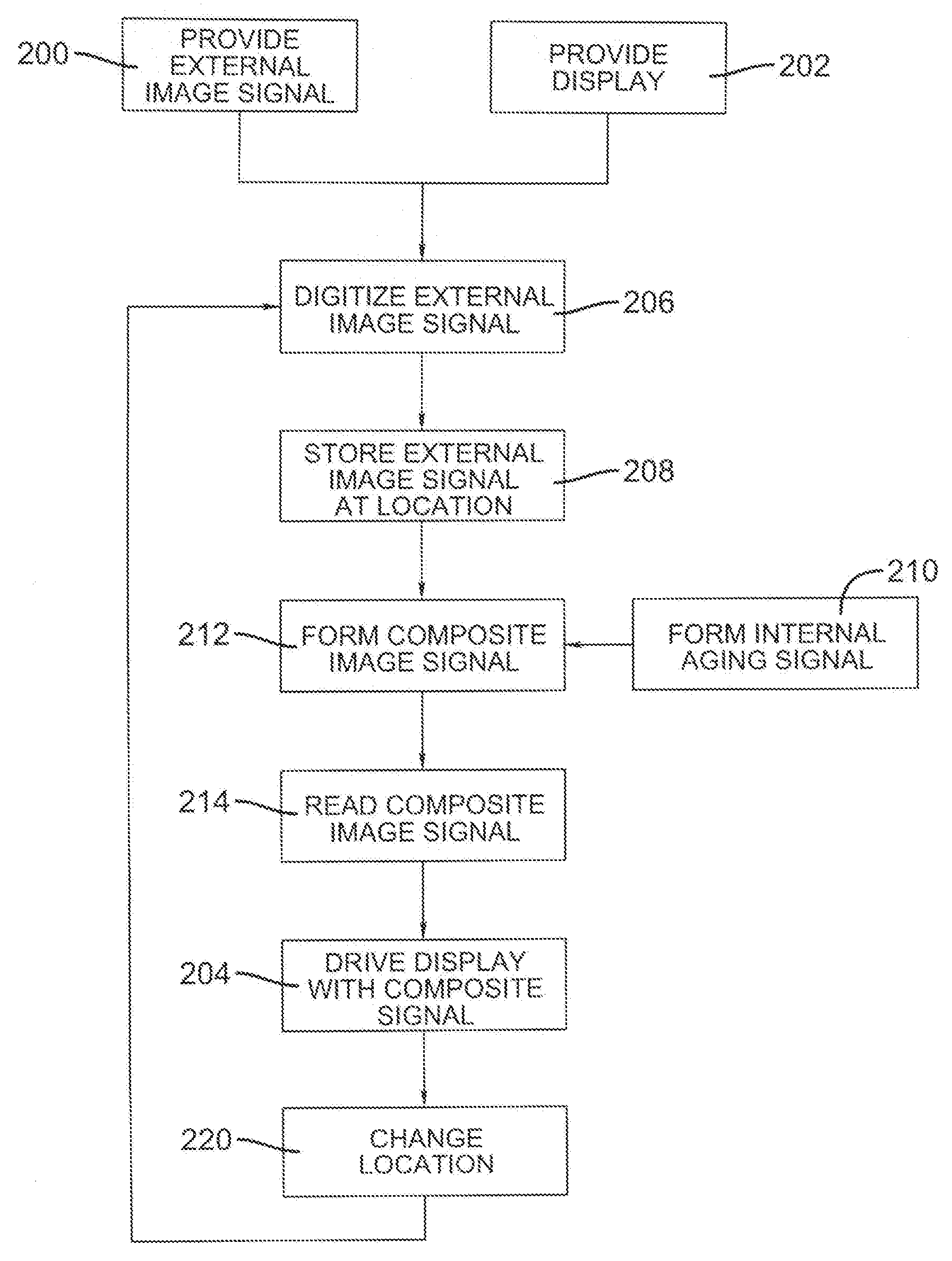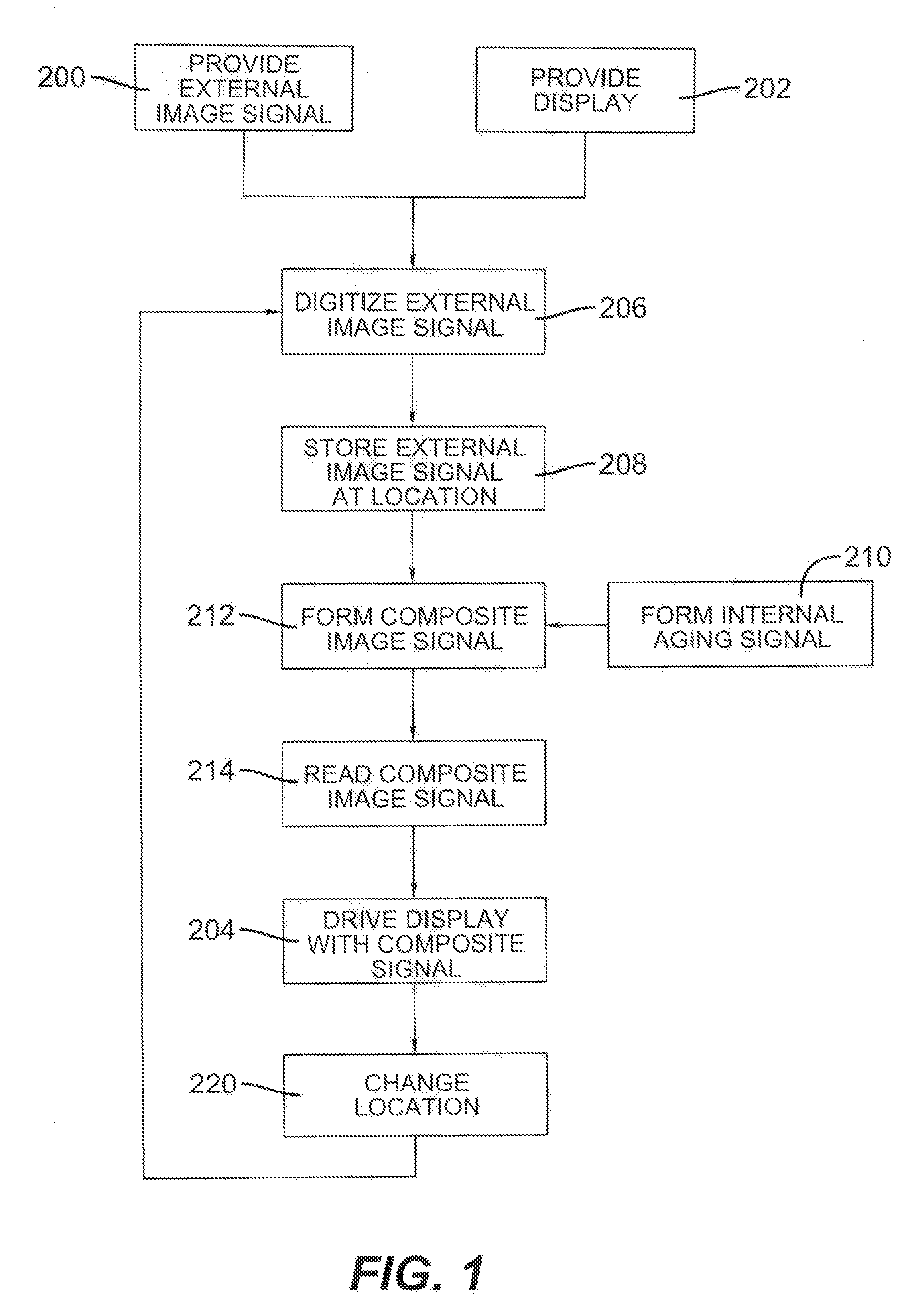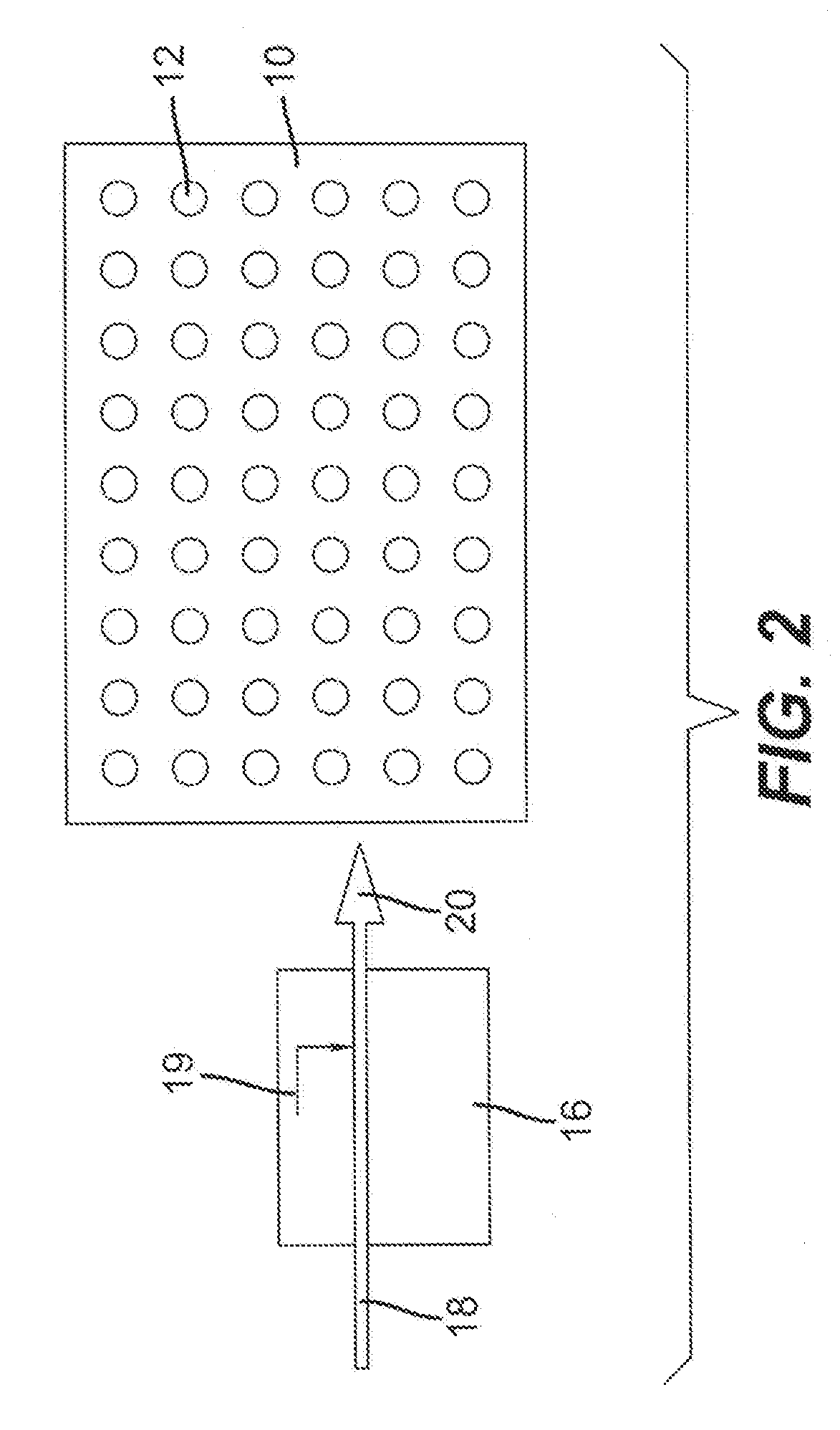Driving method for el displays with improved uniformity
a technology of electroluminescent flatpanel display and driving method, which is applied in the direction of static indicating devices, instruments, etc., can solve the problems of reducing the dynamic range and image artifacts, affecting the uniformity of the display, and the circuit is typically much larger and more complex, so as to reduce the differential aging of the el materials and the tfts in the display.
- Summary
- Abstract
- Description
- Claims
- Application Information
AI Technical Summary
Benefits of technology
Problems solved by technology
Method used
Image
Examples
Embodiment Construction
[0031]Referring to FIG. 1, a method of driving an EL display having a plurality of light-emitting display elements having outputs that change with time or use, comprises the steps of providing 200 an external image signal with a first image aspect ratio; providing 202 an EL display having light-emitting display elements formed in a two-dimensional array having a second display aspect ratio different from the first image aspect ratio; driving 204 all of the two-dimensional array of display elements with a composite signal comprising the external image signal and an internal aging signal, wherein a subset of the display elements is driven by the external image signal and the remainder of the display elements that are not driven by the external image signal are driven with the internal aging signal; and changing 220 the location of the subset of display elements within the two-dimensional array driven by the external image signal over time. The composite signal may be formed 212 in a v...
PUM
 Login to View More
Login to View More Abstract
Description
Claims
Application Information
 Login to View More
Login to View More - R&D
- Intellectual Property
- Life Sciences
- Materials
- Tech Scout
- Unparalleled Data Quality
- Higher Quality Content
- 60% Fewer Hallucinations
Browse by: Latest US Patents, China's latest patents, Technical Efficacy Thesaurus, Application Domain, Technology Topic, Popular Technical Reports.
© 2025 PatSnap. All rights reserved.Legal|Privacy policy|Modern Slavery Act Transparency Statement|Sitemap|About US| Contact US: help@patsnap.com



